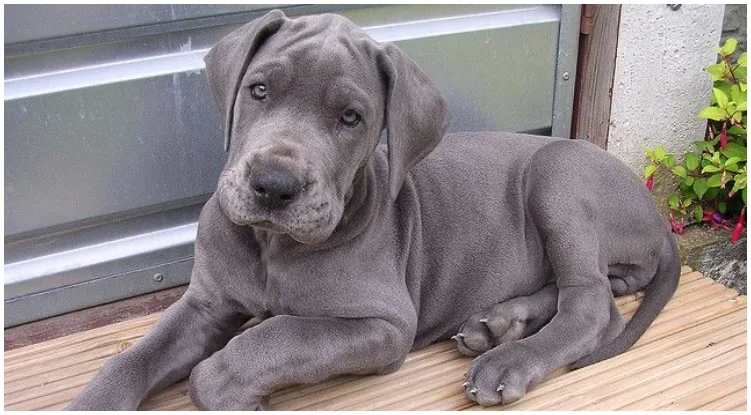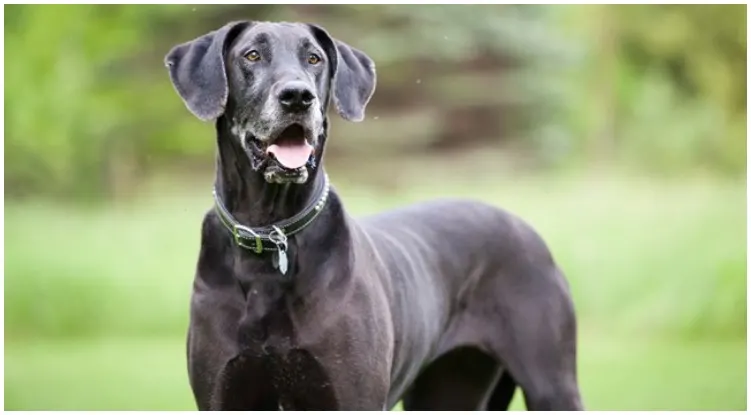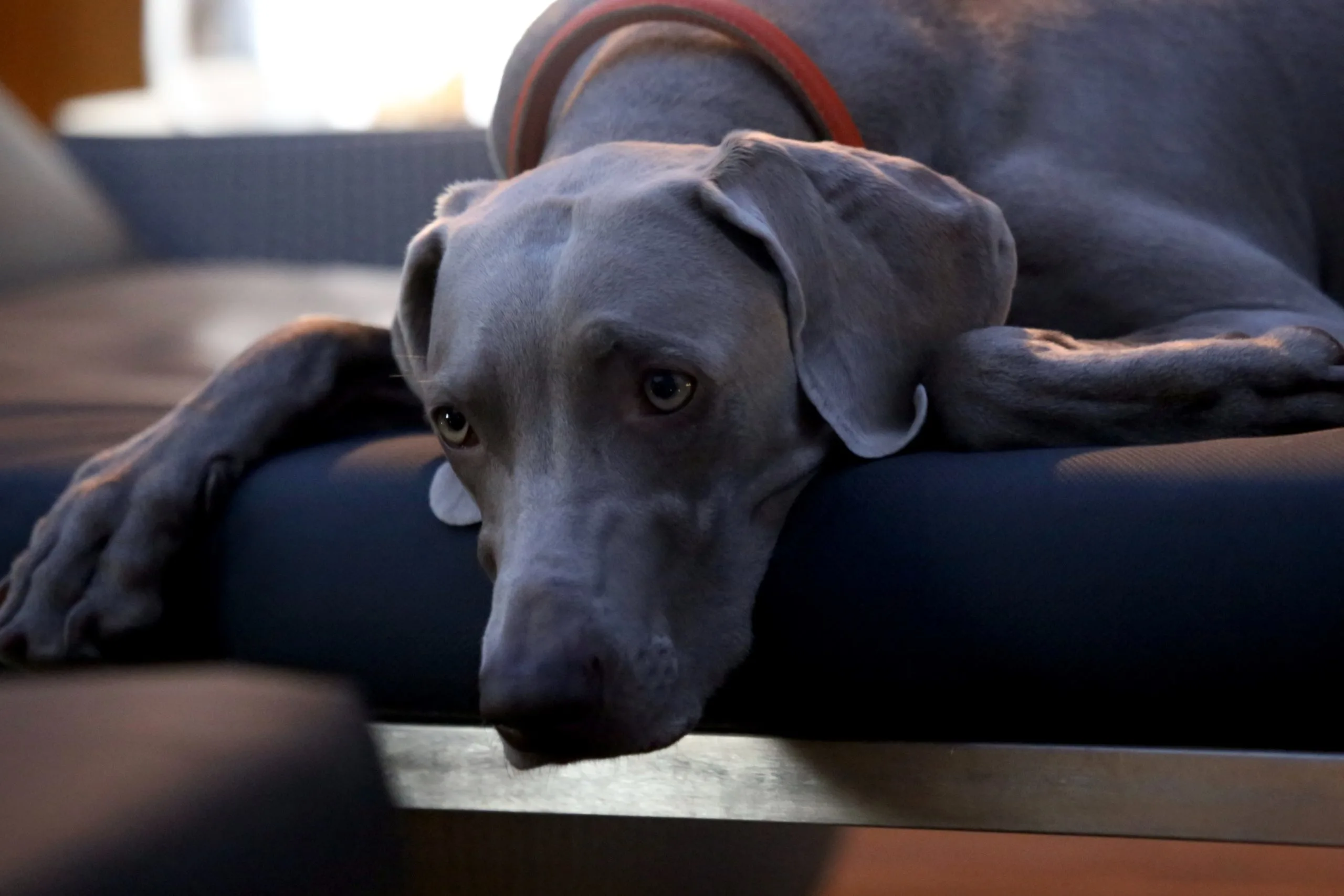Blue Great Dane
Great Danes are amazing dogs. Loving, loyal and gentle. But, did you know that they come in many different colors, including blue! That’s right, the Blue Great Dane is real!
Besides the Blue Dane, we also have the Harlequin Great Dane and the Merle Great Dane. All of which are special in their own way.
Even though they come in different colors, all Great Danes are the same character-wise.
They are probably the best-natured dogs in the world. They are sweet and affectionate. These dogs love to play and just snuggle up with you. Basically, the Great Dane wants to be wherever you are.
But, they can also be protective. If they think you need defending, they will defend you!
Blue Great Dane
If all Great Danes are the same, how is the Blue Great Dane special? What is it that’s interesting about them? That’s worth mentioning? Well, there are many things.
What’s interesting about the Blue Dane is that they can be many shades of blue. And, they can also be born with blue eyes. But, sadly their eyes will turn brown with time. The known facts tell us these gentle giants need proper care and training to expect also beautiful blue offspring.
Responsible breeders will have the good idea and best practices in rising healthy puppies. Always take a close look at the history of breeding and buy only from a reputable breeder for giant breeds.
The recessive blue gene
Let’s first explain the blue gene in more detail. The blue Great Dane coat isn’t exactly blue. Instead, he is just a faded black Great Dane.
Now, this is going to be confusing. The genetics that is behind coat colors is complicated. But I’ll try to explain it as best as I can.
Firstly, a dog’s color is created from two pigments: eumelanin and pheomelanin. Both have a default color, but they can also be altered by different genes.
The black coat is caused by the eumelanin pigment. But, there are other genes that turn the black color into liver, blue or isabella, or violet. They have that recessive gene that turns their black coat into a blue coat.
This pigment also affects the eyes and the nose. That’s the case with the blue Great Dane.
Secondly, we have the pheomelanin pigment. It’s a red pigment that covers shades like deep red, yellow, orange, gold, and light cream.
The intelligence of the Blue Great Dane and their temperament
If you own a Great Dane, then you probably already know that they are basically just big babies. They are loving and affectionate, and they often times do not realize their own size. Great Danes prefer to be close to their owner and are known to try to climb into their owner’s lap while sitting on the couch. They are often referred to as the largest lap dogs and if you want to own one of these dogs, definitely buy a big couch.

All the shades of blue
So, where does the common color come from? The blue color is a result of a recessive blue gene. For a Great Dane to be blue both parents must carry the recessive “blue” gene.
The thing is, these dogs aren’t that rare. But, they are difficult to breed. This is because even if you have two parents with the blue gene. It doesn’t have to mean that the puppies will have a blue color.
The possible tones of blue you can find in Great Danes are:
- Steel Blue
- Fawn Blue
- Brindle Blue
- Harlequin Blue
- Merle Blue
So, let’s explain the different shades of blue.
1. Steel Blue Great Dane
A Steel Blue GD is the only blue GD that is recognized by the American Kennel Club.
2. Blue Fawn Great Dane
These dogs are fawn-colored, but they have blue patches on their face. It kind of looks like a blue mask. The area around their nose and eye is a charcoal color.
3. Blue Brindle Great Dane
The Blue Brindle has a regular brindle base of fawn with blue stripes rather than the regular black.
4. Blue Harlequin Great Dane
The Blue Harlequin Great Dane is iconic. They have a white base coat and dark patches. So, they kind of look like a Dalmatian. But their patches aren’t black, they are blue or gray!
5. Blue Merle Great Dane
These dogs are rare because of the merle gene . They have a dark blue or brownish blue coat with a black spotting slate. THey are loyal companion dogs and you will get a friend for life.

They have a sixth sense
Although you will hear this common phrase for almost every dog, this large breed really does have a sixth sense of danger and they will show it to you.
They are said to be able to sense which stranger is kind and which is not. They will surely know which person is good to be around your kids and family.
Full-grown blue Great Dane
Great Danes are very large dogs. Males weigh between 140 and 175 pounds. They are 30 to 32 inches tall. Females are between 28 and 30 inches tall and weigh between 110 and 140 pounds.
But, does your blue Great Dane change color as they grow up?
Yes, their color will change a bit as they grow up. Their color can become richer and deeper. But it can also become lighter.
Some color changes can also happen because of the following:
- Medication
- Sunlight exposure
- Skin disease
- Nutritional status
Health issues and health concerns
The coat color of dogs can sometimes affect their health. But that’s not the case with the blue Great Dane.
The health problems of this dog are the same as any other Great Dane color.
Some of the most common health problems of the Great Danes are:
- Gastric Torsion – Also known as canine bloat. Even though it sounds harmless, it’s the most common killer for Great Danes. When Great Danes eat too much, their stomach can expand because of the gas build-up. This can restrict blood circulation and cause serious damage to their stomachs.
- Osteosarcoma – It’s also known as bone cancer. And long bones are mostly affected by it. And Great Danes are big dogs with big bones. This tumor is painful and amputation of the affected limb is the only way out.
- Cardiomyopathy – Is a genetic condition and a heart disease that can cause your dog’s heart to become bigger. The symptoms of this condition are: lethargy, weight loss, weakness, difficulty breathing and decreased appetite. But there is a treatment to this and it usually can be solved.
- Hip dysplasia – is another common health concern, but not just for this dog breed but for most of them. Usually, the best thing to do is to talk to a veterinarian before doing anything. These beautiful dogs should be cared for in the best way there is by their dog owners. Be sure to follow the breed standards.
Price of blue great dane puppies
Great Dane puppies typically sell for between $1,000 and $3,000, and you will usually be able to buy a blue Great Danefor somewhere within this range of prices.
With any new adoption, it’s vital to find a reputable breeder to ensure your new pup has been bred responsibly and comes with the necessary shots and documents., resulting puppies being well-bred and having your favorite breed miss the problems with a short lifespan and unnecessary health concerns.
Read more about Great Danes and their lifespan.

